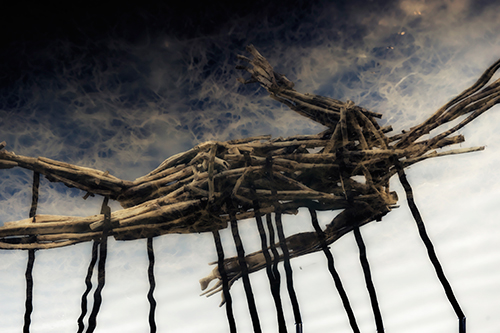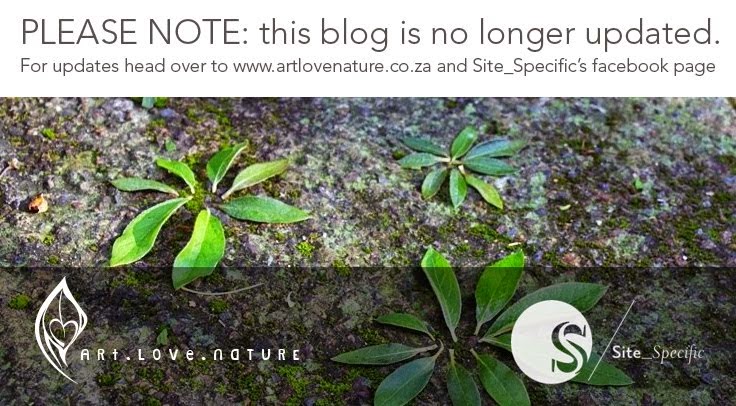Land Art is about working with the landscape, within the landscape. It's about using the elements available to you and arranging, changing and complimenting these in a way that creates harmony and enhances the beauty and inherent unique qualities of the site. It's a conversation between artist and nature, a dance and interplay that relies on understanding and respect.
The landscape is the land artist's canvas, and the leaves, rocks, sand, trees, and plants his/her tools. The sky, earth, forests, beaches and glens are the studio spaces, while the wind, sun, water and insects are companions and co-creators. Just as with 'traditional' sculpture you thus have subtractive as well as additive techniques.
The landscape is the land artist's canvas, and the leaves, rocks, sand, trees, and plants his/her tools. The sky, earth, forests, beaches and glens are the studio spaces, while the wind, sun, water and insects are companions and co-creators. Just as with 'traditional' sculpture you thus have subtractive as well as additive techniques.
Taking away involves:
- Raking, clearing or sweeping sand, leaves, pebbles or debris
- Carving, cutting, scraping into bark, stone or other surfaces
- Scooping or digging into sand or earth
 |
| Beach Calligraphy by Andrew van der Merwe https://www.facebook.com/beachscriber |
 |
| Strijdom van der Merwe - www.strijdom.co.za |
Adding involves:
- wrapping branches, trees or rocks
- stacking boulders and slate,
- building structures and forms
- moving things from one place to another
- bringing in foreign materials to enhance what's already there
Janet Botes | www.janetbotes.co.za
|
 |
| 'Los' by Angus Taylor. Site_Specific 2011 Land Art Event Plettenberg Bay, South Africa. Photograph by Elizabeth Olivier-Kahlau. Image from www.sitespecific.org.za |
Strijdom van der Merwe | www.strijdom.co.za
|
| Di Smith | dismithart.wordpress.com |
Similarly land artists also make use of art & design elements, particularly:
- contrast
- colour
- rhythm and repetition
- line
- shape
- emphasis/focus
- composition
Di Smith | dismithart.wordpress.com
|
That's all for today, but make sure to keep an eye on the Site_Specific Facebook Page for updates and wonderful two-question artist interviews, as we get closer to the second International Land Art Biennale, in Plettenberg Bay 10-17 August 2013!







